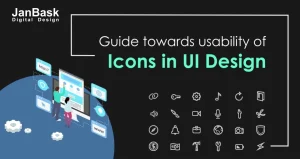
In the fast-paced and competitive world of B2B strategy marketing, having a well-designed website is no longer a luxury but a necessity. Your website serves as the digital storefront for your business plays a vital role in capturing the attention of potential clients and driving sales. However, to truly stand out from the crowd, your B2B web design strategy needs to go beyond aesthetics and focus on showcasing your expertise in the industry. One shining example of this approach is IBM, a global technology leader that has successfully leveraged its website as a powerful sales tool.
This blog post will explore the fundamental principles and strategies behind website designing. Understanding and implementing these strategies can help you unlock new opportunities, build trust with your target audience, and drive your B2B sales to new heights, whether you are a small start-up or an established enterprise.

Looking to Create a B2B Web Design Strategy?
A B2B website, short for a business-to-business website, is an online platform designed to cater to companies that provide products or services to other businesses. Unlike websites aimed at individual consumers or government entities, B2B websites focus on meeting business clients' unique needs and preferences.
Imagine stepping into a bustling marketplace where the noise is filled with business deals and the exchange of expertise. Now, transport that into the digital space, a dynamic hub where businesses of all sizes and industries converge to connect, collaborate, and thrive. This is where the significance of a B2B website emerges. It's a virtual gateway that opens the doors to a world of opportunities where brands can showcase their expertise, forge valuable partnerships, and propel their growth to new heights.
Just like a well-designed storefront captures the attention of passersby, a captivating B2B website beckons potential clients, offering them a glimpse into your business prowess and igniting the spark of curiosity.
Within B2B web development, a well-defined B2B strategy plays a vital role. This strategic document outlines a business's website's purpose, objectives, and key functional and design elements. It serves as a valuable guide to ensure that website is crafted and optimized to align with the company's goals and effectively targets its intended audience. Following a well-defined B2B web design strategy, businesses can create a compelling online presence that attracts and engages their desired B2B clientele.
The importance of web design cannot be overstated, as it plays a crucial role in attracting and engaging users, building trust, and driving conversions. It is the first impression visitors have of your business, so it's essential to optimize it for maximum impact. Here are key B2B website strategies that can help businesses succeed:
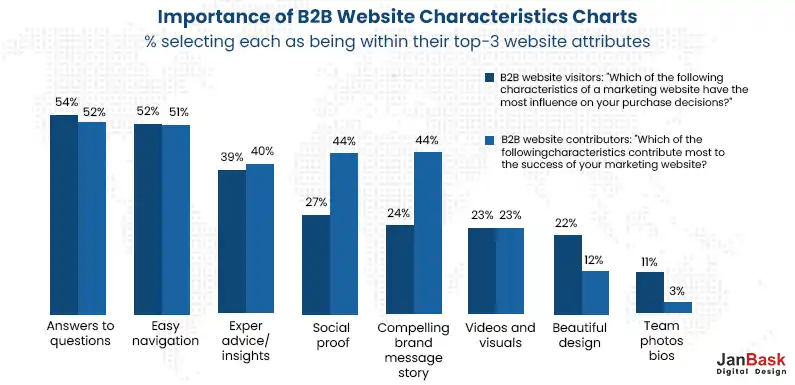
A well-designed landing page should clearly communicate your value proposition, highlight key offerings, and provide a compelling call-to-action. By focusing on intuitive navigation, persuasive copywriting, and visually appealing design, you can create a landing page that engages visitors, encourages them to explore further, and increases the likelihood of conversions.
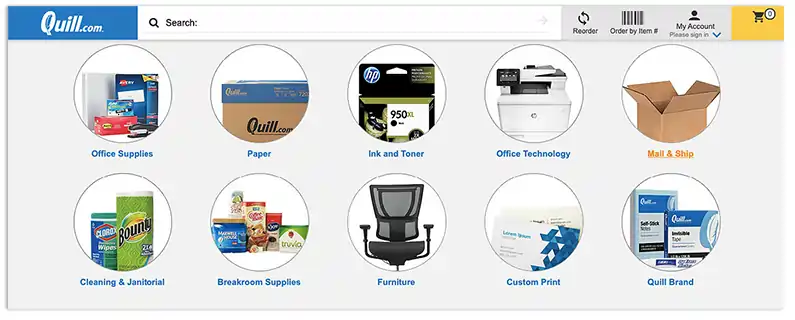
B2B businesses often have a wide range of products and services to offer. A strategic approach involves creating a comprehensive catalogue that effectively showcases your offerings. Organize your products or services into categories, providing detailed descriptions, specifications, pricing information, and any other relevant details that potential clients may need to make informed decisions.
Understanding your target audience and their intent is crucial for developing a successful B2B web design strategy. Conduct thorough research to identify your potential clients' pain points, challenges, and goals. This knowledge enables you to create content and features that resonate with their needs. Implementing user-centric design principles, such as intuitive navigation, prominent search functionalities, and personalized experiences, can help you align your website with the specific intent of your target audience and enhance user satisfaction.
Content marketing is a powerful web design strategy for driving traffic to your B2B website and positioning your brand as an industry thought leader. Create valuable and relevant content, such as blog articles, whitepapers, case studies, and educational resources, that addresses your target audience's pain points and interests. Optimize your content for search engines to increase organic visibility and promote it through various channels, such as social media, email marketing, and industry publications. By consistently delivering valuable content, you can attract and engage a broader audience, drive traffic to your website, and establish credibility within your industry.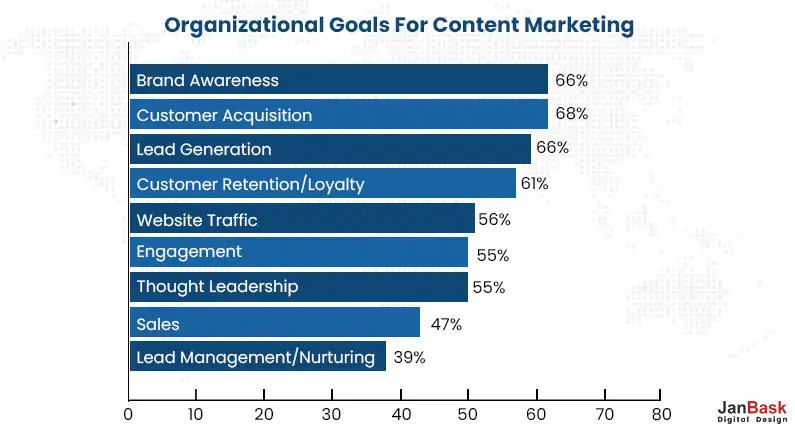
B2B websites should prioritize client-facing functionality to enhance the user experience and streamline interactions with potential and existing clients. This may include features such as customer portals, secure logins, and personalized account management tools, and live chat support. Incorporating these functionalities into your website facilitates efficient communication, provides customized solutions, and fosters strong client relationships.
A mobile-responsive design ensures that your website displays properly and functions seamlessly on various devices. Additionally, focusing on user experience (UX) is vital. Streamline navigation, prioritize relevant content, and provide intuitive interfaces to make it easy for visitors to find the information they need and take desired actions. A positive UX leads to increased engagement and higher conversion rates.
Research and analyze the keywords and phrases your target audience uses when searching for products or services in your industry. Optimize your website's content, meta tags, headers, and URLs to align with these keywords.
Additionally, stay aware of your competitor's SEO strategies and identify opportunities to differentiate yourself and capture relevant organic traffic.
Implement lead generation strategies such as contact forms, gated content, newsletter subscriptions, or demo requests to capture visitor information.
Create compelling calls-to-action that encourage visitors to take the desired action and provide their contact details. Once you have their information, nurture these leads through targeted B2B strategy marketing campaigns, personalized content, and effective follow-up strategies to convert them into loyal customers.
Looking for the right B2B strategy? JanBask Digital Design offers top-notch web design services to help businesses create visually appealing and user-friendly websites.
When it comes to driving sales, there are plenty of business websites that serve as great examples of how to do it right. Here are five examples of B2B business websites that are known to effectively drive sales:
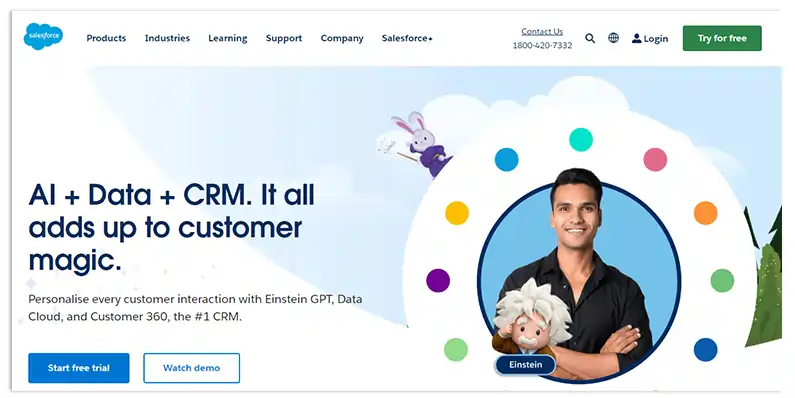
Salesforce is a leading provider of customer relationship management (CRM) software and services. Their website is designed to showcase the features and benefits of their products while highlighting success stories and customer testimonials. The site provides comprehensive product information, demos, and pricing details, allowing potential customers to understand the value proposition. Salesforce also offers a free trial and an easy signup process, encouraging users to engage with their platform and convert into paying customers.
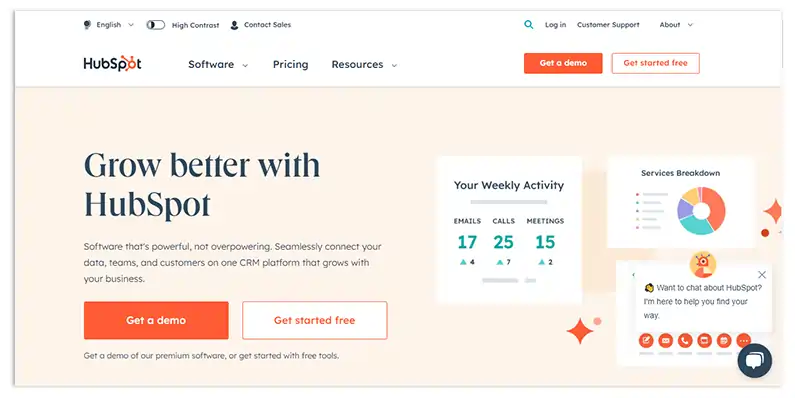
HubSpot offers a suite of inbound B2B strategy marketing and sales software. Their website is a powerful lead generation tool, offering valuable content such as e-books, guides, and templates in exchange for visitor contact information. Their website also provides educational resources, a vibrant community, and showcases their thought leadership.

IBM is a multinational technology company that offers a wide range of B2B solutions, including cloud services, artificial intelligence, and analytics. Their website effectively demonstrates their expertise and industry leadership. The site also incorporates interactive tools, such as solution finders and calculators, to help users understand the value they can derive from IBM's products and services.
IBM's website serves as a comprehensive resource hub for businesses seeking innovative solutions and insights. The B2B strategy employed by IBM focuses on two crucial aspects: visually captivating design and valuable, informative content. Visually, IBM's website features a clean and modern layout that reflects their commitment to innovation. The design is streamlined, ensuring a user-friendly experience and easy navigation. The use of strategic imagery and graphics enhances the visual appeal and effectively conveys IBM's brand identity.
However, what truly sets IBM's website apart is its emphasis on expertise-driven content. The website is packed with a wealth of valuable resources, including whitepapers, case studies, industry reports, and blog articles. These resources provide in-depth insights into various technologies, industry trends, and solutions, positioning IBM as a trusted advisor and industry expert.
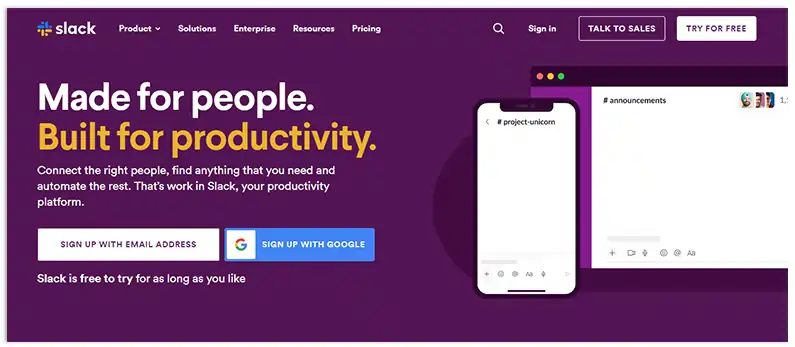
Slack is a popular collaboration platform for teams and businesses. Their website focuses on simplicity and user experience, highlighting the platform's key features and benefits. Slack's site offers clear pricing information, including a free version, and emphasizes its integrations with other popular business tools. The site also showcases customer testimonials, success stories, and a robust knowledge base to address potential customer concerns. The website's streamlined design and intuitive navigation create seamless sales funnel.
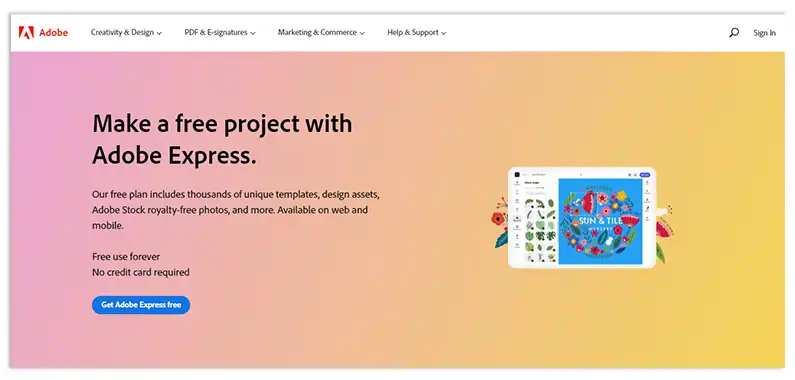
Adobe is a renowned software company providing creative, B2B strategy marketing and document solutions. Their website effectively targets B2B customers by highlighting the capabilities of their products in a visually compelling manner. Adobe's site offers interactive demos, video tutorials, and customer showcases to demonstrate the value and versatility of its software. The website also emphasizes the benefits of subscribing to its Creative Cloud suite and provides various pricing options. Adobe incorporates personalized messaging and tailored content to engage users and nurture leads through the sales funnel.
As a leading B2B web design company, we specialize in creating professional and conversion-driven websites for businesses.
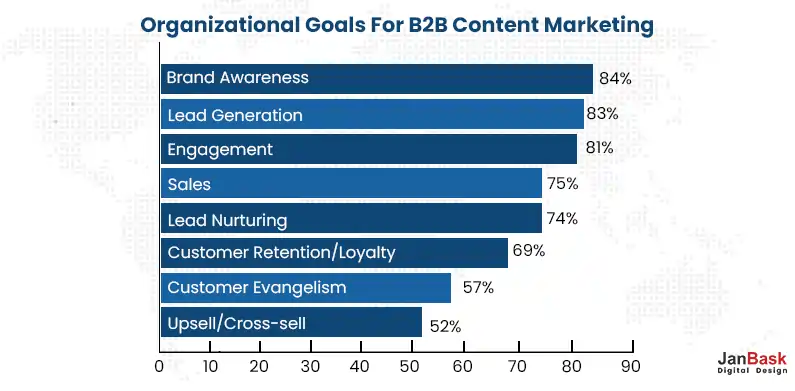 Transforming your B2B design website into a lead-generating funnel requires a strategic approach tailored to your target audience. Here are some essential tips to help you achieve this:
Transforming your B2B design website into a lead-generating funnel requires a strategic approach tailored to your target audience. Here are some essential tips to help you achieve this:
Research Your Audiences: Begin by conducting thorough research on your target audiences. Understand their pain points, needs, preferences, and motivations. Identify their key challenges and how your B2B website can provide solutions. This research will help you tailor your content, messaging, and design to effectively engage and convert your target audience into leads.
Develop Your Sitemap and Key Functionality: Develop a sitemap that outlines the structure and hierarchy of your website. Consider the key pages and sections that will be essential for lead generation, such as landing pages, product/service pages, lead capture forms, and contact information. Define the key functionalities you want to incorporate, such as live chat, email subscription forms, or interactive tools. This planning phase will help ensure a smooth user experience and effective lead generation on your website.
Design Your Site's Look and Feel: The design of your website plays a critical role in capturing visitors' attention and building trust. Develop a visually appealing and professional design that aligns with your branding and resonates with your target audience. Use consistent color schemes, typography, and imagery that reflect your business's personality and values. Pay attention to the user interface (UI) and user experience (UX) design, making sure it's intuitive, easy to navigate, and guides visitors towards desired actions. Incorporate clear calls-to-action (CTAs) and optimize the placement of lead capture forms to maximize conversions.
Clearly Define Your Value Proposition: Clearly communicate the unique value your design services offer to potential clients. Highlight the benefits, expertise, and innovative solutions you bring to the table. Craft compelling messaging that resonates with your target audience and differentiates your business from competitors.
Showcase Your Portfolio: Create a dedicated portfolio section on your website to showcase your past projects and design work. Include case studies that demonstrate the problem-solving capabilities of your designs and the positive impact they have had on previous clients. Visuals are crucial in the design industry, so ensure your portfolio displays high-quality images and highlights your design expertise.
Optimize Your Contact and Inquiry Forms: Make it easy for visitors to contact you by optimizing your contact and inquiry forms. Keep them simple and user-friendly, asking for essential details such as name, email, company name, and project requirements. Consider implementing automation tools to streamline lead capture and follow-up processes.
Offer Consultations or Assessments: Allow visitors to schedule consultations or request design assessments. This allows you to engage directly with potential clients, understand their design needs, and offer tailored solutions. Promote these services prominently on your website, emphasizing the benefits of working with your design team.
Debugging and Quality Control: Ensure that your B2B design website is free from technical glitches and offers a seamless user experience. Perform regular testing and debugging to fix any issues promptly. Poor website performance can discourage visitors from engaging with your content or filling out lead capture forms. A smooth and error-free website experience enhances credibility and increases the likelihood of lead generation.
Promote and Optimize: Promote your B2B design website through various marketing channels such as social media, email marketing, and industry-specific platforms. Optimize your website's content and meta tags with relevant keywords to improve search engine rankings. Consider investing in search engine optimization (SEO) strategies to increase organic traffic and attract potential leads.
Attract the Best Talent: Showcase your expertise and attract top talent by highlighting your company's culture, values, and the exciting projects you work on. Use your website as a platform to share employee testimonials, case studies, and success stories that demonstrate the value of your design services. This can help attract potential clients who are seeking a design partner with a strong track record.
Implement Live Chat or Chatbots: Incorporate live chat or chatbot functionality to engage with visitors in real-time. This provides an opportunity to address immediate questions, offer assistance, and guide them through the lead generation process. Automated chatbots can capture basic lead information and qualify prospects before connecting them with a human representative.
Leverage Testimonials and Social Proof: Display testimonials, client success stories, and industry awards on your website to build trust and credibility. Potential clients seek reassurance that they are making the right choice, and positive feedback from satisfied clients can help solidify their decision to engage with your design services.
Our B2B website designing services are tailored to meet the unique needs of businesses, ensuring a seamless user experience and effective lead generation.
A well-executed B2B web design strategy focusing on expertise can be a game-changer for businesses. You can establish trust and credibility with potential clients by showcasing your industry knowledge, experience, and unique value proposition. Remember, a successful B2B strategy involves understanding your target audience, mapping their journey, and implementing user-friendly functionalities that enhance their experience.
As technology evolves and the B2B landscape becomes increasingly competitive, it's essential to stay updated with the latest trends and continuously optimize your website. Regularly analyze performance metrics, gather user feedback, and adapt your marketing B2B strategy to meet the changing demands and preferences of your target market.
In today's digital age, a well-crafted B2B website serves as a powerful tool to establish your expertise, attract quality leads, and drive business growth. By implementing a comprehensive web design strategy and consulting web design firm like JanBask, you can position your business for success, stand out from competitors, and drive sales goals.
Interested in our B2B Web Design Strategy?

1. How can an expertise-driven B2B web design strategy benefit my business?
An expertise-driven B2B web design strategy showcases your industry knowledge, experience, and unique value proposition. By positioning yourself as an expert, you can build trust, attract qualified leads, and differentiate your business from competitors.
2.What are some key elements to consider when designing a B2B website with an expertise-driven approach?
Key elements to consider include clearly communicating your expertise, showcasing a portfolio of successful projects, incorporating client testimonials, providing valuable content that addresses industry challenges, and implementing user-friendly functionalities that cater to the specific needs of your target audience.
3.How important is mobile optimization in B2B website design?
Mobile optimization is crucial in today's digital landscape. With the increasing use of mobile devices, your B2B website must be responsive and user-friendly across various screen sizes. Mobile optimization enhances user experience, improves search engine rankings, and ensures that your website can reach and engage potential clients on the go.
4.How can content marketing contribute to an expertise-driven B2B web design strategy?
Content marketing plays a vital role in positioning your business as an industry expert. By creating and sharing valuable content such as blog articles, whitepapers, and case studies, you can demonstrate your expertise, address common pain points, and provide solutions to potential clients. Content marketing helps attract organic traffic, nurture leads, and establish your business as a trusted resource.
5.How can lead generation be integrated into a B2B web design strategy focused on expertise?
Lead generation is an essential component of an expertise-driven B2B web design strategy. By strategically placing lead capture forms, offering valuable resources in exchange for contact information, and implementing clear calls-to-action, you can capture leads and nurture them through targeted marketing efforts. This approach helps convert website visitors into qualified leads and drives revenue for your business.
6.How can user experience (UX) design contribute to an expertise-driven B2B web strategy?
UX design focuses on creating a seamless and intuitive user experience on your website.
By optimizing navigation, simplifying user interactions, and ensuring quick access to relevant information, you enhance the overall experience and increase the likelihood of visitors engaging with your expertise-driven content and converting it into leads.
7. Is aligning website design with branding essential in an expertise-driven B2B strategy?
Yes, branding consistency is crucial. Your website design should align with your brand identity, including color schemes, typography, and overall visual aesthetics. Characterise across your website and other marketing B2B strategy materials strengthens your brand image, improves recognition, and reinforces your expertise.
K
Great article! I never realized how an expertise-driven web design strategy could impact lead generation. I’ll be incorporating these tips into our B2B design website.
R
Training is such a crucial aspect! We’ve seen a significant increase in leads by providing valuable resources and training materials on our website. It positions us as industry experts and builds trust with potential clients.
T
Attracting top talent is something I have yet to consider. I see how showcasing our design projects and company culture on our website helps us stand out and attract the best clients and talent.
M
I’m glad you mentioned promoting and optimizing the website. We’ve been focusing on our SEO efforts, and it’s incredible to see an increase in organic traffic and lead generation. It’s worth the investment!
R
User experience is key! Ensuring our B2B design website is user-friendly and intuitive has significantly improved engagement and conversions. It’s all about providing a seamless experience for potential clients.